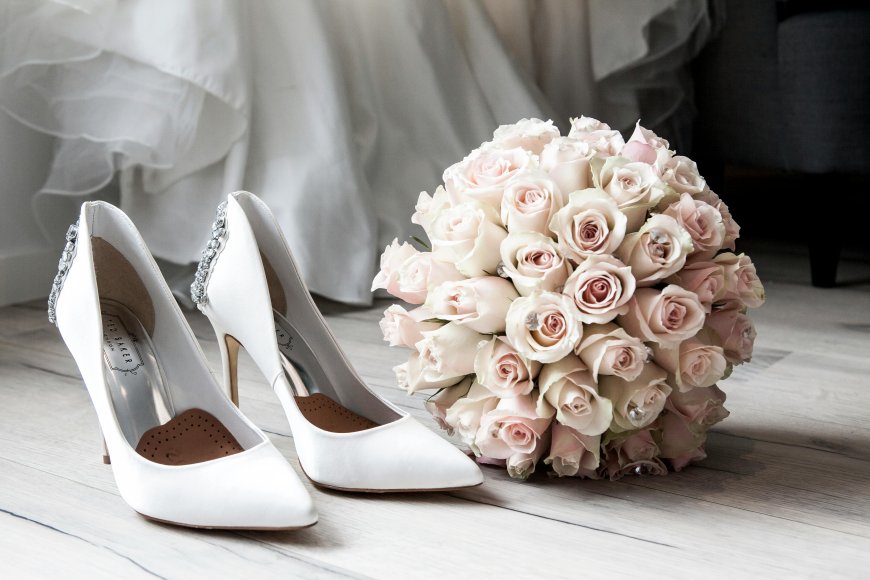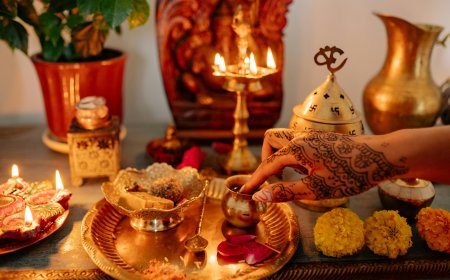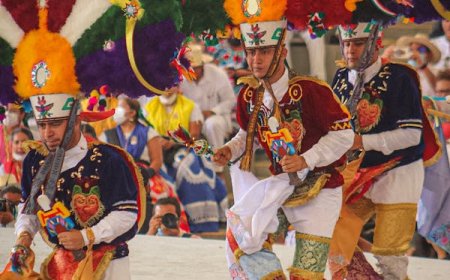Wedding rituals in different cultures
Wedding rituals vary greatly among different cultures, with some including dancing and singing, while others involve religious ceremonies or family traditions. These rituals are characterized by their expression of deep cultural heritage and celebration of love and marital union, making them a unique and exciting experience in each culture.

Wedding rituals vary greatly among different cultures, with some including dancing and singing, while others involve religious ceremonies or family traditions. These rituals are characterized by their expression of deep cultural heritage and celebration of love and marital union, making them a unique and exciting experience in each culture.
Wedding rituals in different cultures
Wedding rituals are a series of events and traditions that take place during the wedding ceremony, which vary according to the culture and social traditions of the community. These rituals are an integral part of the marriage experience and express joy and celebration at the beginning of a new shared life.
Wedding rituals include several stages, starting with pre-wedding celebrations and preparations, moving on to the wedding ceremony itself, and ending with the subsequent celebrations. In many cultures, the rituals begin with special ceremonies to prepare the bride and groom, including visits from relatives and friends, and the exchange of gifts and blessings.
The rituals also include religious or secular ceremonies, which vary according to religion and cultural traditions. Religious ceremonies such as prayers and religious rituals may be included, while secular traditions such as exchanging vows or cutting the wedding cake may also be observed.
After the official wedding ceremony, there are celebrations and receptions, where family and friends gather to celebrate, dance, and exchange congratulations. This part of the rituals is an opportunity to unite the two families and strengthen social bonds.
Overall, wedding rituals are an expression of deep culture and traditions within societies, representing a significant moment in the lives of the couple and their families.
The influence of culture on wedding rituals
The influence of culture on wedding rituals reflects immense diversity in the ways marriage is celebrated across the world. Wedding rituals are an integral part of the cultural heritage of each society, reflecting their customs, values, and traditions. In fact, these rituals embody the history of peoples and their cultural evolution through the ages.
In Western cultures, for example, wedding rituals include many traditional elements such as exchanging rings and cutting the wedding cake. In contrast, in Eastern cultures, ceremonies may be more traditional and include significant religious rituals and deep family traditions.
However, these rituals can also be influenced by social and economic factors. For example, in urban societies, fashion and decor may play a significant role in determining the character of the event, while family and traditions may be the foundation in rural communities.
Wedding rituals serve as a window connecting the past and the present, reflecting the values, beliefs, and cultural aspirations of peoples, making it a unique and exciting experience that reflects the diversity of humanity and its varied heritage.
Unique experiences in wedding rituals
Unique experiences in wedding rituals vary significantly between cultures and communities, creating diverse and memorable experiences. Here are some examples of these unique experiences:
1. Native American Wedding: In some Native American tribes in North America, wedding rituals involve interaction with nature and spirituality. This includes traditional ceremonies involving dance, singing, the use of herbs, and smoking as part of the celebration.
2. Japanese Shinto Wedding: In Japanese culture, Shinto wedding ceremonies are known for their simplicity and elegance. The exchange of the sake cups (a traditional Japanese drink) symbolizes unity and union between the bride and groom and their families.
3. Maasai Wedding in Kenya: Maasai wedding rituals in Kenya include traditional dances and songs performed by both men and women. The groom also pays the bride price (dowry) to the bride's family as part of the marriage agreement.
4. Buddhist Indonesian Wedding: Buddhist weddings in Indonesia are considered important religious and social events. The rituals include prayers, religious songs, and the exchange of vows in front of the monk and relatives.
5. Bedouin Wedding in the Arabian Desert: Bedouin weddings in the Arabian Desert include traditional ceremonies such as camel rides, traditional dances, and the exchange of valuable gifts between the families of the bride and groom.
These examples demonstrate how wedding rituals reflect the diversity of cultures and traditions around the world, making each wedding experience unique and distinctive in its own way.
The essential elements of unique rituals
The essential elements of unique wedding rituals vary according to the culture, traditions, and beliefs of each society, but some common elements can be identified that appear in many ceremonies and distinguish them:
1. Unity and Communication Ceremonies: These ceremonies are essential in most cultures, where vows and promises are exchanged between the bride and groom in front of the attendees. These ceremonies may include signing contracts, exchanging rings, or other symbolic items.
2. Religious or Spiritual Ceremonies: In many cultures, wedding ceremonies include significant religious or spiritual rituals, such as reading prayers or religious verses, or performing traditional rituals associated with the religion.
3. Celebrations and Entertainment: These elements include dancing, singing, and music, where attendees celebrate the marriage by enjoying entertainment activities and welcoming the bride and groom in a distinctive manner.
4. Food and Drink Traditions: Weddings are known for offering a variety of traditional foods and drinks that reflect the culture of the country or region. These traditions may include special meals or traditional dishes served at specific ceremonies.
5. Distinct Attire and Decor: Choosing attire and decor is an important part of wedding rituals, as they can reflect the wedding culture and the preferences of the bride and groom. This may include wearing traditional clothing or using luxurious or simple decorations according to choice.
6. Gifts and Appreciation: In many cultures, wedding rituals include exchanging gifts between families or presenting gifts to guests as tokens of appreciation and thanks for their attendance.
Unique wedding rituals are characterized by a unique blend of religious, social, and cultural elements that bring together families and friends to celebrate a special and important occasion in the lives of the couple.
The evolution of wedding rituals throughout the ages
Wedding rituals have significantly evolved throughout the ages, influenced by the social, cultural, and religious changes that societies have witnessed over time. Here's an overview of this evolution across some key eras
1. Ancient Times: In ancient times, wedding rituals were intertwined with myths and religious traditions. For example, in ancient civilizations such as Ancient Egypt, Greece, and Rome, there were significant religious ceremonies involving offerings and prayers to the gods, along with social celebrations featuring dancing and singing.
2. Middle Ages: During the Middle Ages, religious influence on wedding rituals increased significantly, with religious and church ceremonies becoming an essential part of weddings. Traditions such as exchanging rings, religious prayers, and readings from the Bible became commonplace.
3. Modern Era: With the development of societies and changes in values and beliefs, wedding rituals began to shift towards honoring the couple and their personal preferences more. There was increased flexibility in choosing the venue, attire, decor, and cuisine, and weddings began to reflect the diversity of cultures and modern styles.
4. Contemporary Era: In the present era, wedding rituals have become incredibly diverse and innovative worldwide. Current rituals include many personal and unique elements that reflect the preferences of the couple, such as bohemian-style weddings, modern urban weddings, or weddings with traditional cultural themes.
The evolution of wedding rituals reflects changes in values, traditions, and fashion throughout the ages, making each wedding a unique and distinctive experience that reflects the culture and history of the couple and the society they live in.
The aesthetics of celebration
The aesthetics of celebration in wedding rituals reflect a harmonious combination of visual and aesthetic elements that make the event a unique and unforgettable experience. Here's a look at how to achieve distinctive aesthetics in weddings
1. Decor and Design: Decor and design are essential parts of the celebration's aesthetics. Decor involves choosing colors, flowers, furniture, and lighting that suit the couple's taste and reflect their culture and personal style. Design may also include creatively using patterns, ornaments, and other aesthetic elements.
2. Music and Entertainment Coordination: Music and entertainment coordination play a crucial role in the aesthetics of the celebration, as music can create the right atmosphere and add vibrancy to the event. Additionally, innovative entertainment performances such as traditional dances or spectacular shows can bring joy and happiness to the celebration.
3. Food and Beverage Arrangement: Arranging food and beverages is an important part of the celebration's aesthetics, as the selection and presentation of dishes can create an elegant ambiance at the event. Creative serving techniques and color coordination can also enhance the aesthetics of food and beverages.
4. Attire, Hairstyles, and Makeup: Choosing attire, hairstyles, and makeup contributes to highlighting the aesthetics of the celebration, as they can harmoniously complement the decor and overall atmosphere of the event. Both the couple and guests can choose attire and looks that reflect their personal style and add a touch of aesthetics to the celebration.
These elements integrate together to create distinctive aesthetics in weddings, making the event a charming and unforgettable experience for both the couple and guests alike.
A journey around the world
A journey around the world in wedding rituals reflects the immense cultural diversity that distinguishes different societies around the globe. This journey takes us on a quick tour to explore some distinctive rituals in various cultures
1. India:
In India, wedding rituals are characterized by vibrant colors and luxury. Indian weddings are renowned for their long and detailed ceremonies, featuring traditional dances and delicious cuisine. Rituals include ceremonies like Mehendi (henna application), Sangeet (singing and dancing), and Vidaai (farewell), in addition to religious wedding ceremonies.
2. Japan:
In Japan, weddings are known for their simplicity and elegance. Rituals include exchanging sake cups as a symbol of unity between the couple. Ancient Japanese rituals also involve presenting monetary gifts (yens) in decorative envelopes.
3. South Africa:
In South Africa, weddings are marked by grand and joyful celebrations. South African weddings are known for traditional dances, live music, and traditions like exchanging gifts between the couple's families and serving delicious food.
4. Latin America:
In Latin America, wedding rituals include exciting Latin dances and live music. Latin weddings feature traditional ceremonies like ring exchange and gift-giving, along with serving tasty foods like tacos and live music.
5. The Middle East:
In the Middle East, weddings are characterized by luxury and strong family traditions. Eastern rituals include ceremonies such as henna, civil weddings, religious weddings, as well as serving delicious traditional Arab cuisines.
A journey around the world in wedding rituals reflects the cultural and aesthetic diversity that distinguishes each society, making each wedding a unique and distinctive experience in its own way.
Summary
The rituals of weddings vary greatly across different cultures around the world, reflecting the cultural heritage and social values of each community. In India, Indian wedding rituals include long-lasting religious and social ceremonies, while in Japan, ceremonies are characterized by simplicity and elegance, with the exchange of sake cups being a notable tradition. In Latin America, wedding rituals feature exciting Latin dances and live music. In the Middle East, weddings are characterized by luxury and strong family traditions. Regardless of the culture, wedding rituals embody expressions of love and marital unity, making them a unique and distinctive experience in every culture.
Sources
1. Wedding Customs Around the World - BBC Arabic
An article providing an overview of wedding customs in different cultures around the world, highlighting the differences and similarities among them.
2. Wedding Customs in India - Thaqafat Nafsak
An article detailing the wedding customs in India, shedding light on the religious and social customs and traditions.
3. Wedding Traditions in Japan - Kyozome
An article reviewing the unique traditions and customs of weddings in Japan, including celebrations, religious, and social ceremonies.
What's Your Reaction?



































































































































































